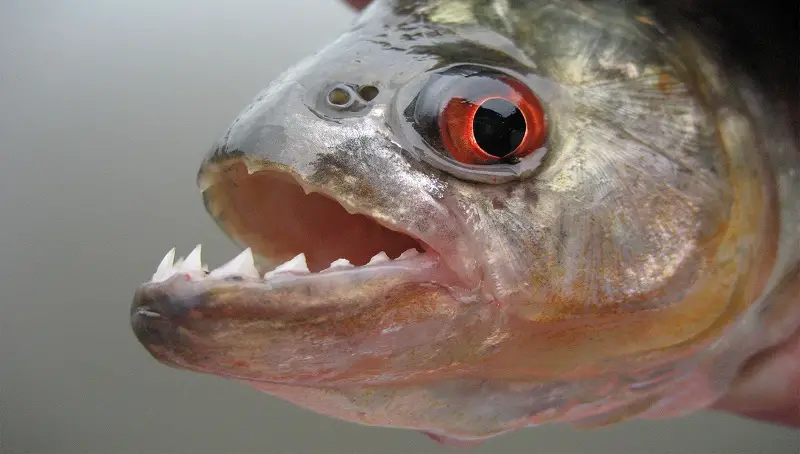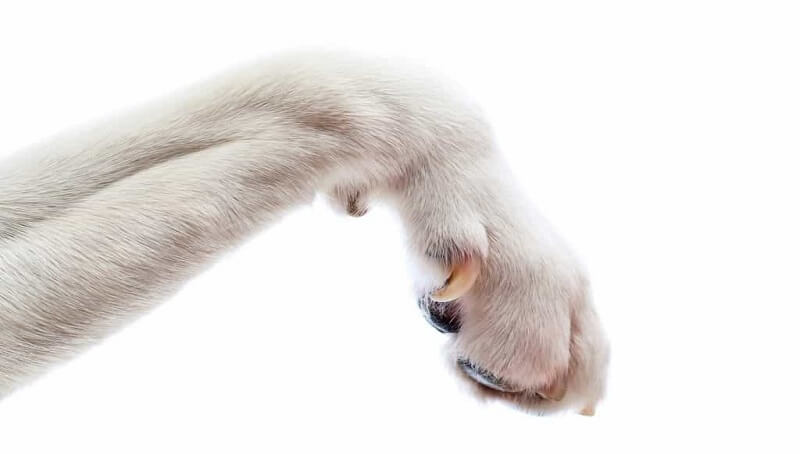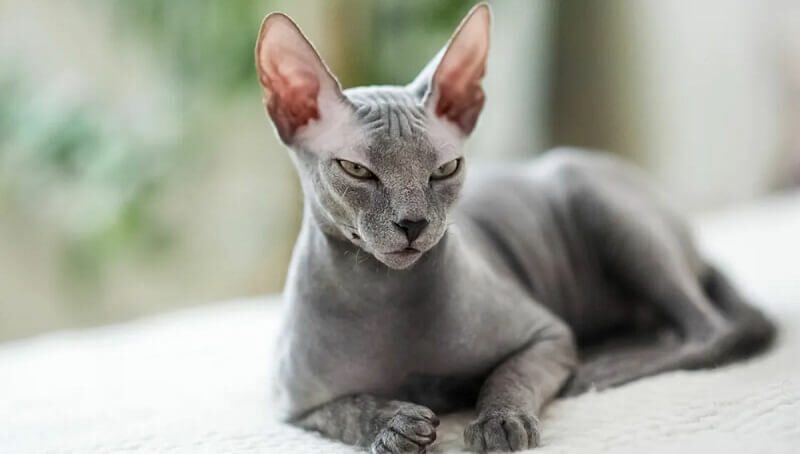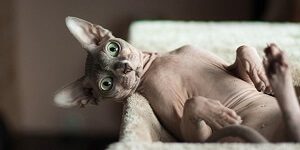
Interesting Facts on Piranha Fish
October 7, 2022
What To Do About a Broken Dew Claw That’s Not Bleeding?
October 9, 2022
Origin
Over the past 100 years, hairless kittens have appeared spontaneously among domestic cats. This natural, spontaneous mutation appears to be a relatively common one, since hairless cats have been discovered in Canada, France, Mexico, Russia, Australia, and the United States. However, many of these breeds have never been perfected.
The first official breed selection program began in the 60s in Canada when a pair of short-haired domestic cats gave birth to a hairless kitten. In 1970, the Cat Fanciers Association (CFA) granted the “hairless Canadian cat” provisional breed status.
However, the following year, the CFA canceled its provisional status due to health problems and growing difficulties. At the time, it was believed that the gene associated with hair loss was the cause of the cat’s short life span.
The Sphynx we know today appeared in 1975, when the owners of a farm in Minnesota, the Pearson family, discovered that their short-haired cat, Jezabelle, gave birth to a hairless kitten, which they called Epidermis. In 1976, another hairless kitten is born, called Dermis. The two hairless kittens are ceded to breeder Kim Mueske, in Oregon, who used them to create the breed.
The name “Sphynx” was chosen after the name of the great sphinx of Giza.
In 1983, a Canadian breeder, Shirley Smith sent two kittens to Dr. Hugo Hernandez in the Netherlands. Dr. Hernandez mated the two specimens, called Punkie and Paloma until Devon rex was obtained.
The descendants of these cats, along with the descendants of the Pearson cats, formed the foundation for the creation of the Sphinx cat today. In February 1998, the Sphynx was accepted by the CFA in its database.
Appearance
Once you manage to overcome the shock of seeing a “naked” cat, you will find that this breed has other distinctive features as well. Sphinxes are medium-sized cats with a body longer than wide, muscular, and well-proportioned. The chest is deep and well-dressed by muscles, and the abdomen is prominent.
The head is triangular, with rounded corners, longer than wide, with the skull rounded and the forehead slightly flat. The jaws are prominent, and the chin is strong and well-pointed. The ears are large and wide like parabolic antennas, with no internal hair. The nose is short, covered with skin colored like the one on the body.
Their eyes are large, oval, lemon-shaped, slightly oblique, well-spaced, and expressive, with a color resembling that of the hair, but they can also be green. The neck is long, thin, and muscular. Its tail is long, conical, and thin. The legs are long, slender, and with well-highlighted muscles.
The legs are medium-length, thin, but with strong bones. The paws are oval, with long fingers and thick cushions. In reality, the Sphynx does not have skin more wrinkled than any other cat. All cats have sagging, wrinkled skin, as the skin of the cat is the thinnest compared to other domestic animals, and also the most elastic. In fact, it’s much easier to spot these ridges in a hairless cat.
Despite your expectations, the Sphynx just doesn’t seem to have hair. Its skin is covered with extremely fine fluff, which brings with it the texture of the deer skin.
You might also like my articles with interesting facts about orange tabby cats, Calico cats, or black Bengal cats.
Sphynx is found in different varieties of colors and patterns, but the exact color is sometimes difficult to determine in a hairless cat, so in feline exhibitions, no points are awarded or penalized because of its coloring.
The body weight of the Sphynx is between 3,5-7 kg, with the males being more robust.
Sphynx cat behavior
The Sphynx is an affectionate and playful pet. They are sociable, agile, and extremely curious cats, being crazy about the company of their owners or other pets.
To say that the Sphynx is agile and lively is only a modest statement. They will perform acrobatics similar to the monkeys from the top of the door or library. Devoted and loyal, they will follow their owner everywhere, wagging their tail like a dog and purring continuously.
They will greet their owner when he gets home and are also very talkative. The Sphynx needs your unconditional attention, but it is also as cheeky and sweet as a child.
They say the Sphynx are champions at purring. They like to be spoiled and won’t refuse a good play.
They are highly sociable cats, tolerating other pets without too much effort. Friendly and affectionate, the Sphynx will love your children from the first moment.
Sphynx cat particularities
 Sphinx are exclusively indoor cats because they have diminished protection from environmental factors, and do not like to stay on cold surfaces.
Sphinx are exclusively indoor cats because they have diminished protection from environmental factors, and do not like to stay on cold surfaces.
Their body temperature is one or two degrees higher than other cats and they have an extraordinary ability to compensate for heat loss. The Sphynx has a characteristic position when sitting, lifting one of the front limbs.
Kittens are born covered in fine fluff, which they lose when they become adults. Colors and patterns of fur can sometimes be hard to see in adults. Sphynx may display all color varieties.
The Sphynx should be bathed once a week, but you should always use special products for cats. These cats are very sensitive, so it is very important to use only products addressed to them. It is important to dry it with a towel immediately after bathing and you should not allow it to stay in the cold or go out. Nails should be shortened when necessary.
The ears should also be cleaned once a week with the help of hygienic chopsticks. The ear should be cleaned from the outside toward the inside. If you haven’t done this before, your veterinarian will teach you.
Always remember that the Sphynx is an exclusively indoor cat. Their skin is extremely sensitive due to the lack of hair, so they are prone to sunburn.
Nutrition
Each cat is unique and each has its own preferences, refusals, and needs when it comes to food. However, cats are carnivores and each of them needs to get 41 different and specific nutrients from their diet. The proportion of these nutrients varies depending on age, lifestyle, and overall health, so it’s no surprise that a growing energetic kitty needs a different balance of nutrients in the diet than a less active adult cat.
Sphynx cat health
Despite its lack of hair which could give it less protection from environmental factors and various pathogens, the Sphynx is a resistant and healthy breed with few medical problems.
As with other breeds, these cats are prone to oral diseases, like gingivitis and dental tartar, and skin allergies, and in the case of males, additional attention should be paid to possible urinary problems.
Sphynx should not be exposed to sudden changes in temperature, as it should not be exposed to extreme temperatures, too low or too high, being prone to sunburn or frostbite.
Like genetic diseases, no specific sensitivity is reported in the literature.
Like other breeds, with age, respectively, after the age of 6-8 years, a routine check of your pet is imperative, accompanied by several investigations, such as ultrasound, X-ray, and blood and urine tests. These will help you detect early possible individual sensitivities to try to establish a proper diet or treatment. The average life expectancy of a Sphynx cat is 10-15 years.
